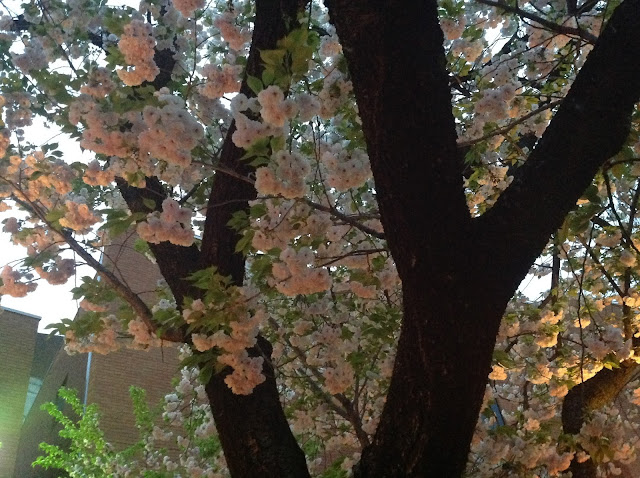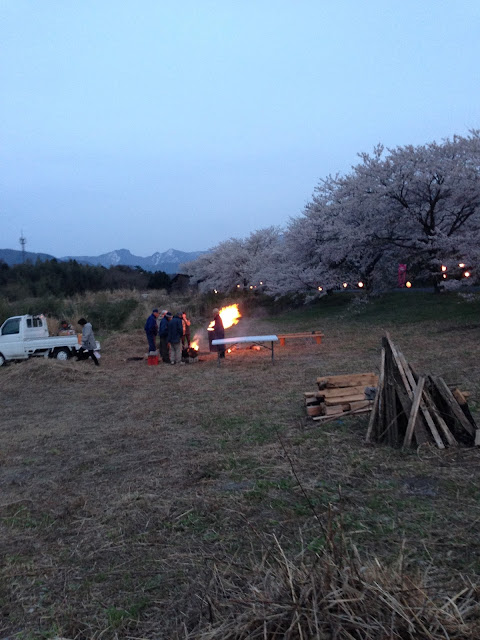Japan has earned the distinction of being one of the most beautiful countries to visit during the spring season. It's the time of the year when the cherry blossoms or sakura, the most adored flowers of the Japanese people bloom.
On the train from Narita Airport to Tokyo, my heart jumped with joy when I saw cherry blossom trees with flowers abloom along the sides of the railroad in Chiba Prefecture. In Tokyo, we visited the Ueno Park where we witnessed many Japanese people merrily eating, drinking, singing, and chatting under the cherry blossom trees. This is called hanami or cherry blossom viewing party. I found it awesome, but little did I know that this was just a snippet of the scenes that would unfold before my very eyes in the next few days.
We took the shinkansen (bullet train) from Tokyo to the Kansai region where the most popular places for tourists to visit, especially during the spring season are Kyoto, Osaka, and Nara. In Kyoto, it was rather crowded at the Kiyomizu temple that we had to patiently wait for our turn to have our souvenir photos taken beside the sakura trees.
Yoshino Mountain (Nara Perfecture)
My greatest sakura experience happened aboard a helicopter. From Osaka, we flew over several mountains and hills until we were above the Yoshino Mountain in Nara Prefecture, where more than 30,000 cherry blossom trees were proudly staging the most magnificent flower dance of all time. I felt like a bird hovering above a pink paradise. Yoshino Mountain is part of a designated UNESCO World Heritage “Sacred Sites and Pilgrimage Routes in the Kii Mountain Range”. Several temples and shrines are located around Yoshino Mountain.
Zoheikyoku (Osaka Mint Bureau)
The gods were in our favor in Osaka because we chanced upon the zoheikyoku or the mint bureau in Osaka which opens its gates to the public for only one week every year to share the beauty and splendor of more than 300 sakura trees of different varieties inside the compound. The dates vary depending on the weather and the blooming time of the cherry blossoms. Yes, it was also crowded but the beauty of the flowers was overwhelming, especially those with multiple layers of petals which I imagined as pink Christmas balls delicately hanging and swaying with the gentle afternoon breeze.
I remember a friend from Tokyo, a retired florist who, along with other volunteers used to go to the Tohoku region to plant sakura trees. They wanted to paint a ray of hope to the hearts of the victims of the 2011 Tohoku Earthquake. I asked him why sakura? He answered, “For us, sakura is a symbol of joy, beauty and hope.”
Japanese folk song
I found the English translation of the famous Japanese folk song Sakura on Wikipedia and it goes like this:
Cherry blossoms, cherry blossoms (Sakura, sakura)
In fields, mountains and villages (Noyama mo sato mo)
As far as the eye can see (Mi-watasu kagiri)
Is it mist or clouds (Kasumi ka kumo ka)
Fragrant in the morning sun (Asahi ni niou)
Cherry blossoms, cherry blossoms (Sakura, sakura)
Flowers in full bloom (hana zakari)
Cherry blossoms, cherry blossoms (Sakura, sakura)
Across the spring sky (Yayoi no sora wa)
As far as the eye can see (Mi-watasu kagiri)
Is it mist or clouds (Kasumi ka kumo ka)
Fragrant in the air (Nioi zo izuru)
Come now, come now (Izaya, izaya)
Let’s go and see them (mini yukan)





















